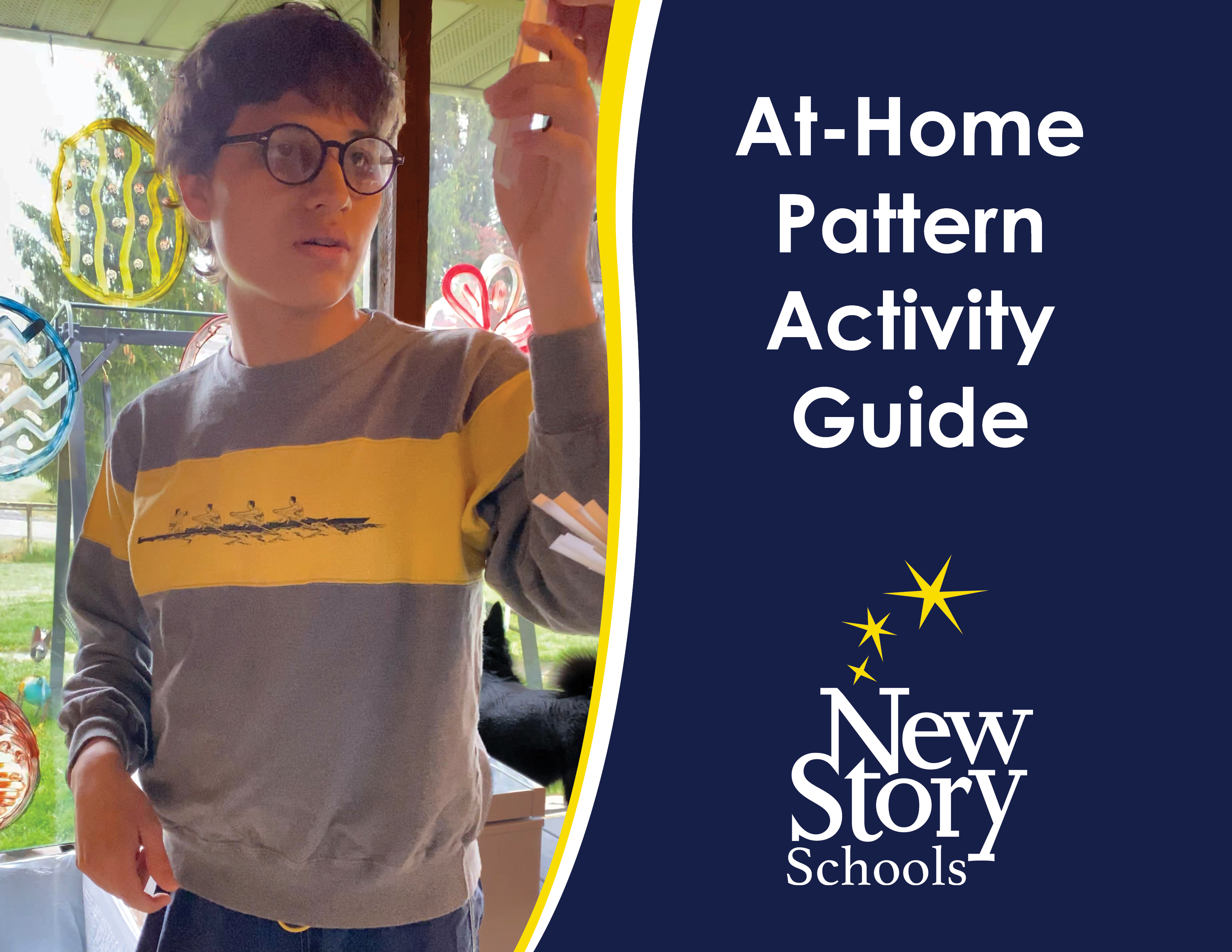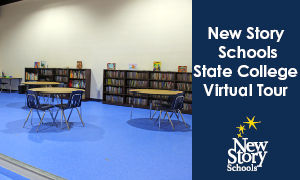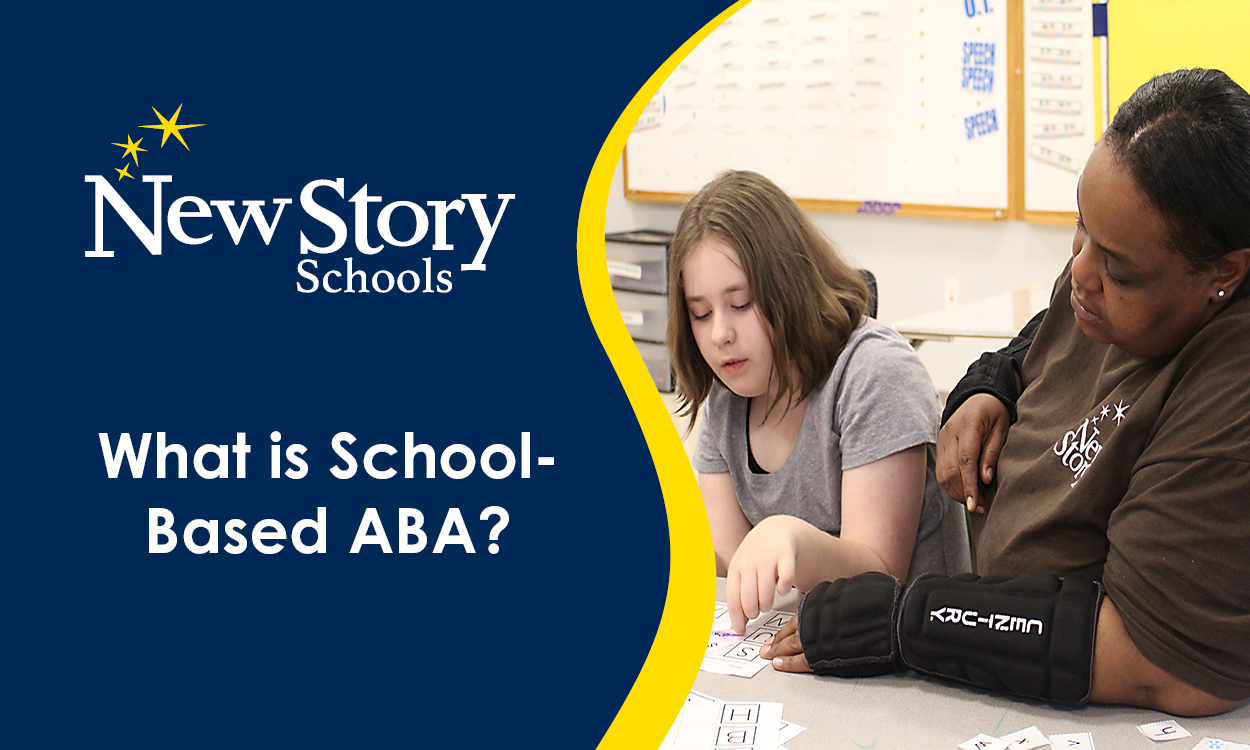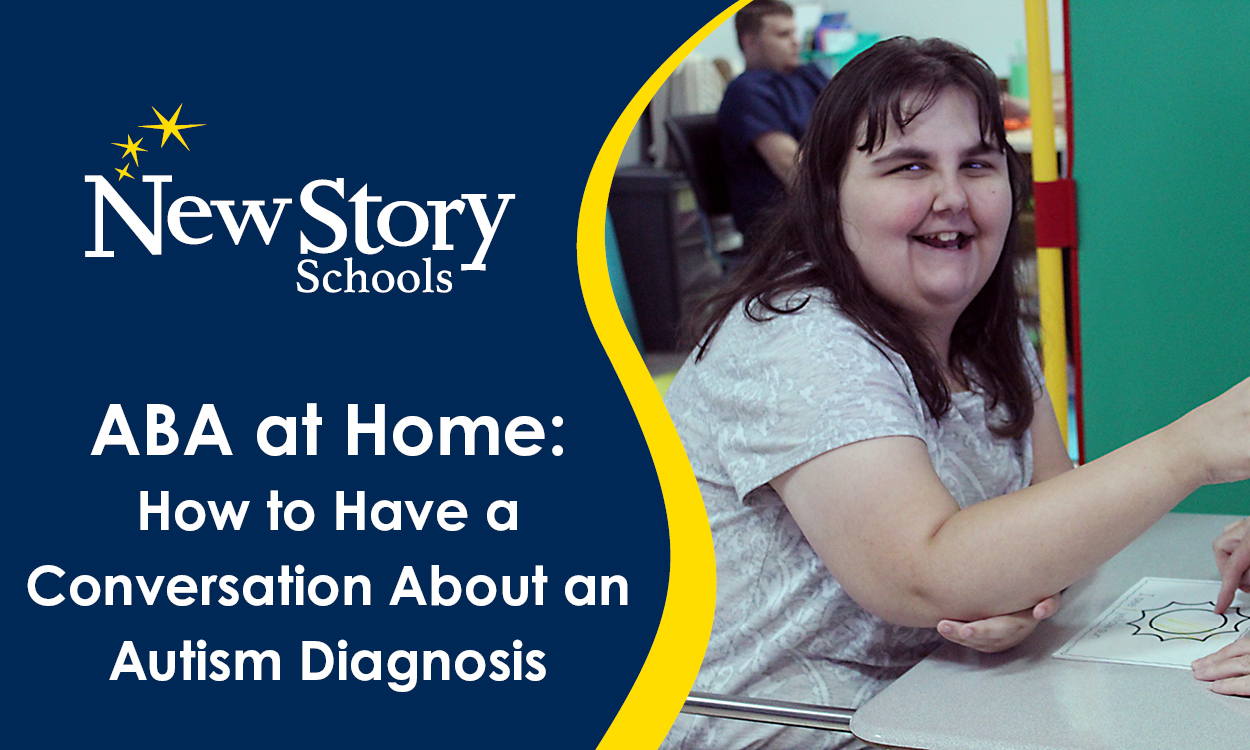At-Home Pattern Activity Guide
Posted: January 25, 2021 | Written By: Kelly Martin, MS, CCC-SLP | Category: At Home Help

Pattern activities are a great tool for parents to use at home that help children participate in a variety of functional and leisure tasks. You put toys away, do laundry, clean surfaces, and pour ingredients regularly, and your child can be a part of that activity, too.
The goal of pattern activities that place your child in a specific role is to help your child realize they are a valued participant. It also gives you time with them during everyday activities.
We call many of these interactions ‘Giver-Put’ers’ because they involve the simple repeating sequence of one person giving an item and the other person accepting it and putting it somewhere. Other types of patterned activities may have elements that are more dependent on one another. Think “I wash… you dry.” I’ve videoed my son engaged in several of these tasks, so be sure to check out New Story Schools’ Instagram to see all the videos.
How Many Variations Are There?
The sky’s the limit! Almost any action or activity can be turned into a pattern. Place your child in a specific role in the activity—holding, handing, putting, pouring, mixing, wiping. Switch roles often. Get creative!
Working on a Giver-Put’er Activity:
- Start Slow and Build
- Start seated, in a contained area if need be. Start with hand-over-hand guidance to perform a task like putting markers into a bag or putting fruit into a bowl. Fade that hand-over-hand support when you feel your child understands and is repeating the pattern.
- Talk About Each Object or Action as You Do It
- Keep your language at or slightly above your child’s typical language level. Repeat the item’s name or the action’s name as it happens or is present. With my son I might use the word “in” to start with, and then add “marker.” We progress to “in the bag,” and “blue marker.” When he’s gotten that we progress to “put the blue marker in the bag.” Remember that this activity is not about succeeding or failing—it's a way to help your child be part of normal clean up times.
- Build in Pauses and Movement
- As the activity becomes easier for your child to acclimate to, hold the item till they reach for it. The next time, move your hand a few inches, let them reach a few more inches left, right, up, down. Try walking a pace or two away so they come to you.
- Build on the connection by pausing and holding the object for an extra couple seconds, even if they’re grabbing it, to see if they will make eye contact or repeat the word. If the language doesn’t come, don’t let that disrupt the pattern you’ve established. Keep going.
- Be Flexible
- Create the giver-put’er activity from different seats, in different rooms. Alter the order of doing it and use various types of containers and objects. Switching the roles is important too--they can be the Giver and you be the Put’er!
- Sneak in something odd: Spoon…fork…spoon…knife… marker… “MARKER! Where did that come from!” and laugh about it together. Don’t be afraid to be silly!
- Make an assembly line
- If you have a helpful 3rd party around, the child can be the middle member of an assembly line of sorts. For example, Person A gives the child a puzzle piece, and they take it and give it to Person B, who puts it in the puzzle. That way your child has an equal role in the activity without the frustration of placing the pieces, and you can all celebrate the shared accomplishment!
- Maintain Your Focus
- If your child gets derailed, reestablish the pattern by simplifying or adding guidance. Instead of saying, “come sit back down,” repeat the language you have chosen to pair with the task and wait while holding out the fork. If you’ve chosen the word “Fork,” repeat that word and guide them back to the position.
- Celebrate Fails and Successes
- If there’s a spill, say, “whoa, so much water!” and then continue the pattern, if possible. Afterwards, make a new pattern of cleaning it up.
- Try to avoid asking questions or using phrases like “good job”. Instead make comments about the interaction. Randomly celebrate, “Woohoo, we are pouring water! High Five!” This reinforces that you are working together and keeps things fun and lighthearted!
Ideally, you progress to where they move around the house and outside while maintaining their engagement. Remember: enjoy this time and interaction with your child!
Check out my work with my son on our Instagram!
Want to be notified of new articles and resources from New Story Schools? Submit your email and opt into our newsletter!









